
Over the last few years one of the most popular approach shoes for climbers, scramblers and mountaineers has been the FiveTen Camp Four. Less specialised than the 'Tennie Guide' it is a more durable all-rounder that most people are as comfortable wearing to the pub as they are on the steep rocky scree approach to a crag or on their chosen ridge route in the mountains.
So the question is, can you improve on this already excellent product, or is the major redesign for 2014/15 of the Camp Four a cosmetic change?
We had two models to test, the standard Camp Four and the Camp Four Mid - a higher boot style of shoe. These were tested in the Peak District and Lake District on various crag approaches, and on some longer walks in the Peak over a period of 3 months.
CLICK HERE for your chance to win a pair in the latest UKC Competition.
Construction
The first thing that is obvious out of the box is that the appearance has changed quite dramatically. The new model is a much more clean-cut design, a smooth stylish look with small flashes of colour as opposed to the rough and rugged workhorse appearance of its predecessor.
The chunky heel cup is gone in favour of a new 'svelte heel cage' to quote FiveTen. The heel now has a rubber tension strap, similar to those found on rock shoes, and a narrower profile. The air holes in the upper have also gone although the actual fabric hasn't changed. The rand now fits further around the upper extending all the way back to the tension strap which gives a very secure bond between the upper shoe and the sole.
The laces are fitted with sewn loops of the upper rather than metal eyelets (except the top one) which enables a snugger fit when tightening. The higher mid version has two hooks for higher lacing.
Padding in the tongue and around the heel cup have been reduced which has resulted in a slightly lighter - shoe 420g verses 460g.
The sole has always been one of the main attractions of the Camp Four. The new model has a more studded profile which gives better grip on rough terrain but leaves less rubber in contact with the rock/ground to take advantage of the Stealth S1 rubber.
Performance
The initial impression when you put this shoe on is more of a robust training shoe than you got from it predecessor. The reduction in padding makes it feel less of an armour cladding for your foot but with the trade off of feeling more springy, lighter and easier to run and jump in. Overall though the feel of the shoe is not an improvement in my opinion and I definitely preferred the chunkier feel of the older model.
The sole is as sticky as ever. It performs superbly on all terrain. I have been continually impressed with the grip of these shoes over the years on the most slippery of rock. Their friction on angled rock is as good as ever and they certainly give the confidence you require with your foot placements when walking on jumbled and uneven rocky surfaces.
Weather proofing seems to have been improved with the new uppers. They are very splash proof and can take a reasonable degree of submersion without any sign of leakage. The removal of the breathing holes has helped in this respect and that doesn't seem to have a knock-on negative effect on smell or over-heating.

The Mid model offers even more weather resistance. The fit on the pair I had wasn't great but that may well have been my strange ankles, I did get some pain when lacing them up tightly. For those after something that they can use as an approach shoe and a lightweight walking boot, these are certainly a good option.
Summary
This all-round approach and scrambling shoe has a good sole and grip that is slightly more lightweight than its predecessor. Personally (fit is clearly subjective) I found it not as good in terms of overall fit and significantly worse than its predecessor in terms of general feel. They have a larger volume than the older model so it is worth trying a smaller size if you want a snug fit but even so you don't get the solid armour-cladding feel that made the old Camp Fours such a great shoe.
The durability compared to the old model appears to be comparable but, overall, it is difficult to recommend these shoes as a follow on for people who used to be fans of the original Camp Fours.
It comes in black, khaki and marine for the low version and marine for the mid version. Their is also a women's model in khaki with turquoise trim.
Price (Standard): £110
Price (Mid): £120

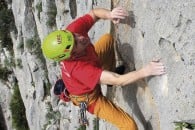

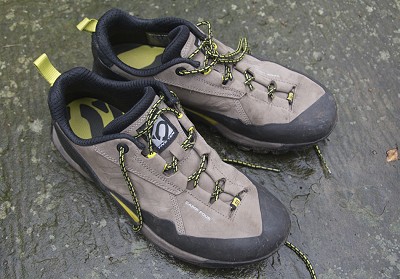

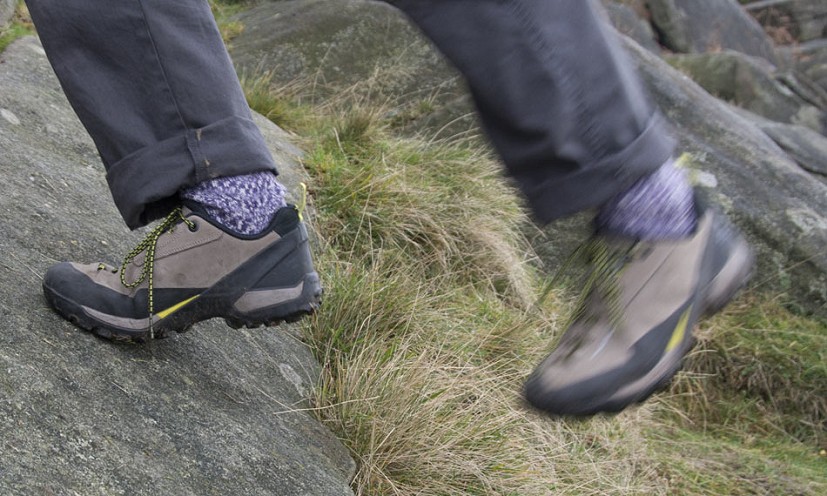


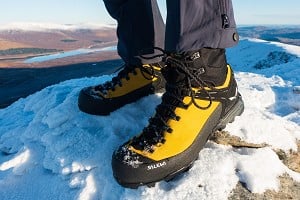
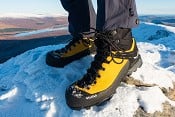
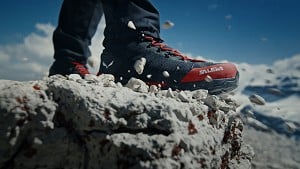

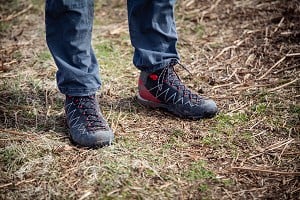

Comments